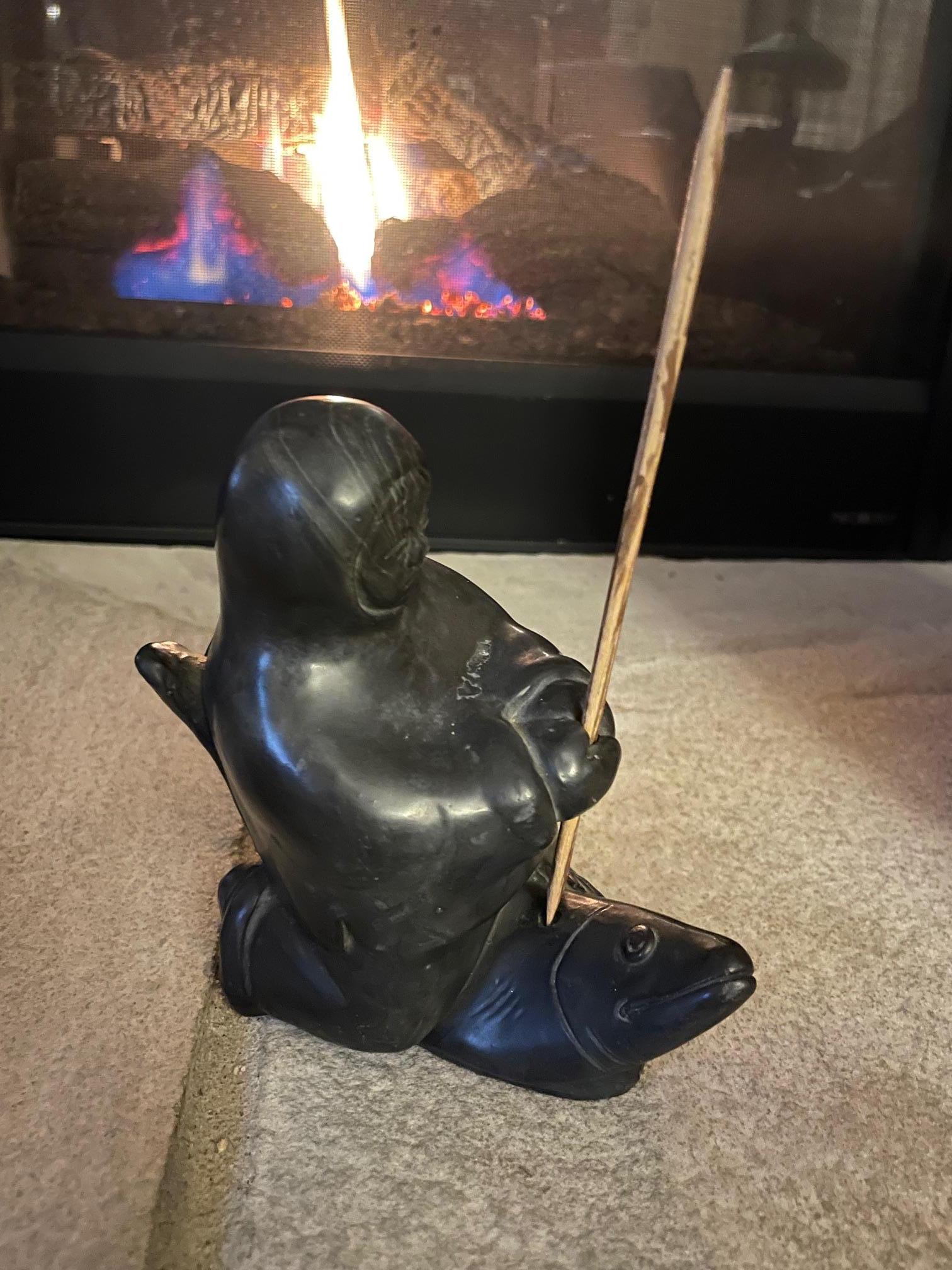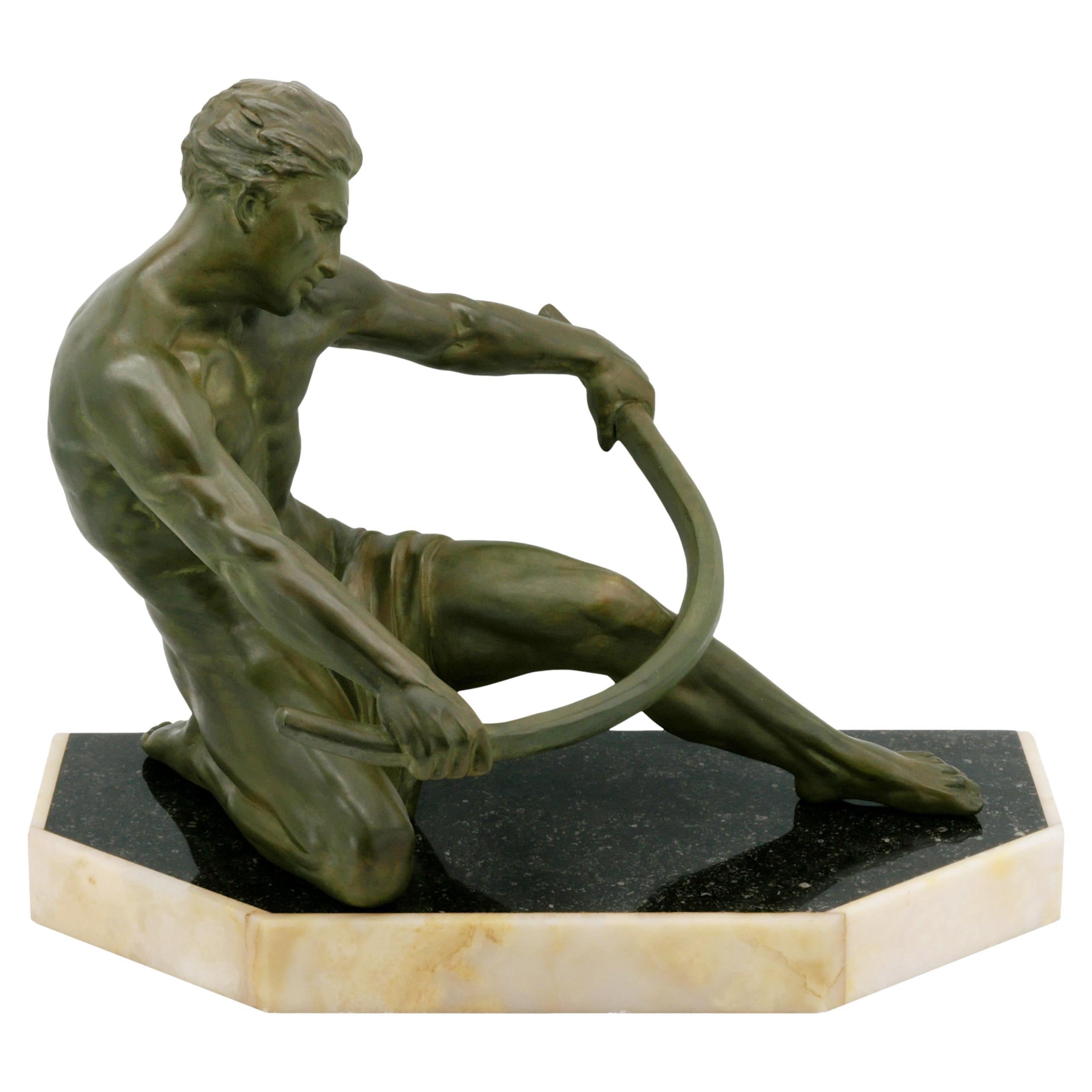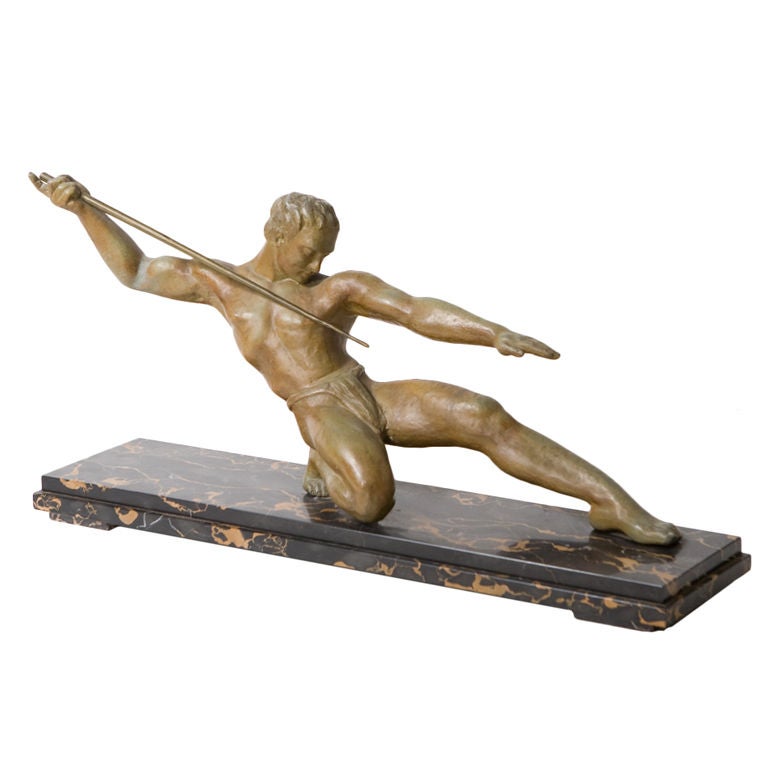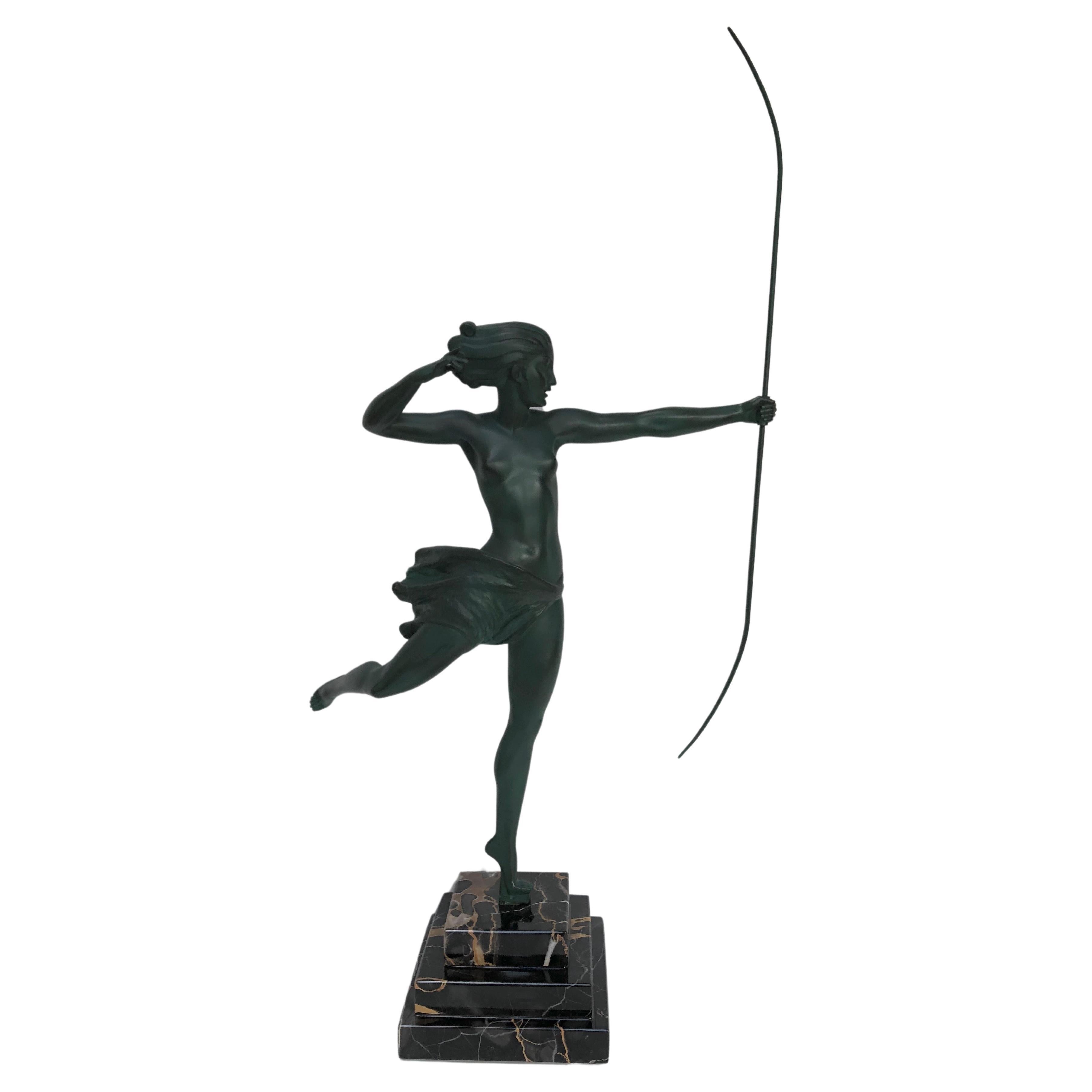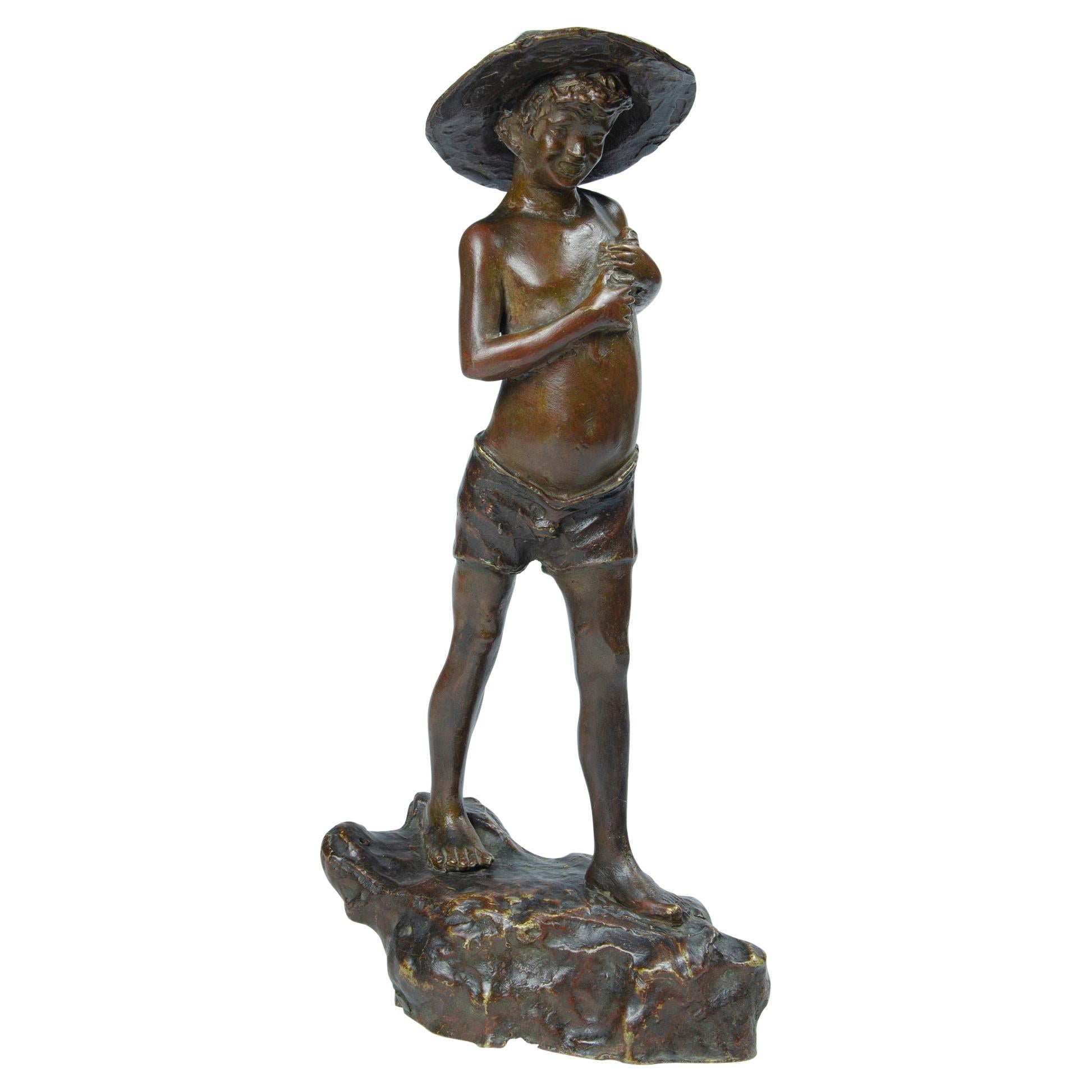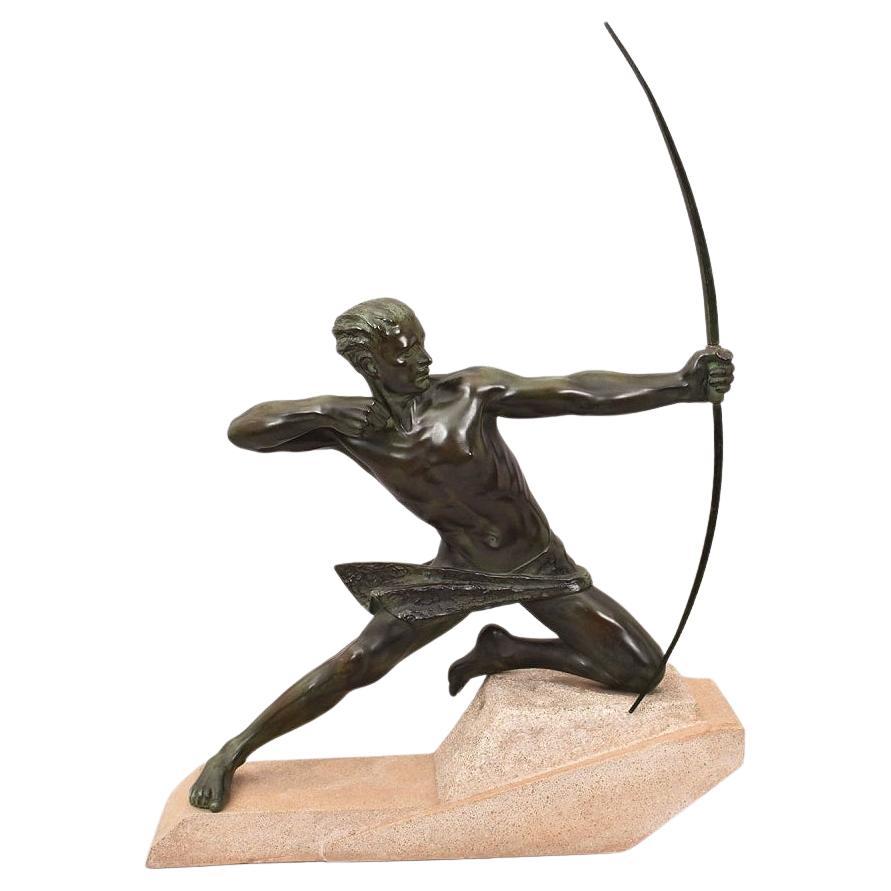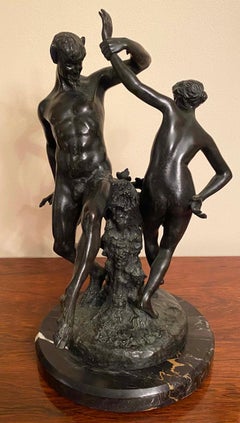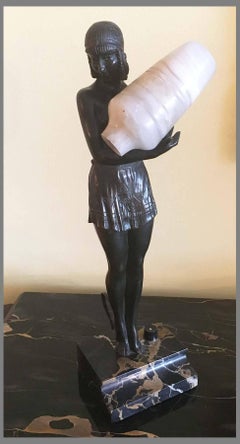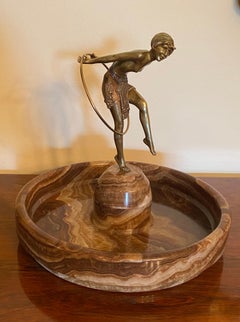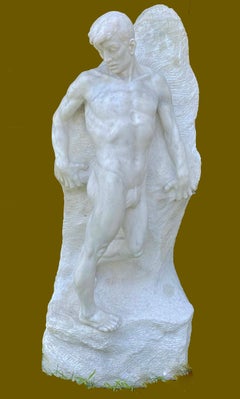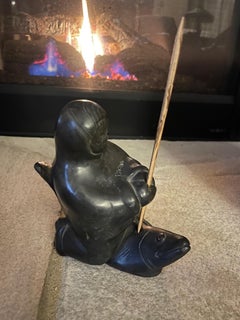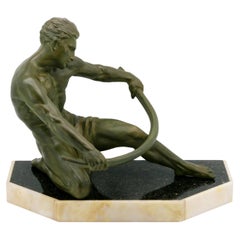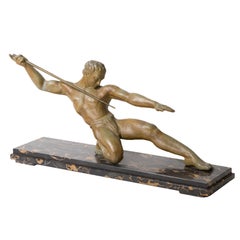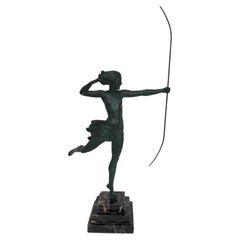Want more images or videos?
Request additional images or videos from the seller
1 of 6
The Fisherman1930's
1930's
$2,950
£2,238.05
€2,566.05
CA$4,202.45
A$4,560.69
CHF 2,399.64
MX$55,412.55
NOK 30,043.06
SEK 28,288.27
DKK 19,159.57
About the Item
An impressive French Art Deco sculpture of a semi nude male holding a trident.
Cast in patinated French spelter and sits on a marble base.
We believe Bezin may be a pseudonym for another popular Artist of the period.
- Attributed to:Ugo Cipriani
- Creation Year:1930's
- Dimensions:Height: 15 in (38.1 cm)Width: 29.75 in (75.57 cm)Depth: 6.5 in (16.51 cm)
- Medium:
- Movement & Style:
- Period:
- Condition:Very good overall vintage condition with some very minor chips to the marble edges and gentle wear to the patina.
- Gallery Location:Los Angeles, CA
- Reference Number:1stDibs: LU3916343682
About the Seller
5.0
Vetted Professional Seller
Every seller passes strict standards for authenticity and reliability
Established in 1972
1stDibs seller since 2011
409 sales on 1stDibs
Typical response time: <1 hour
- ShippingRetrieving quote...Shipping from: Edgewater, NJ
- Return Policy
Authenticity Guarantee
In the unlikely event there’s an issue with an item’s authenticity, contact us within 1 year for a full refund. DetailsMoney-Back Guarantee
If your item is not as described, is damaged in transit, or does not arrive, contact us within 7 days for a full refund. Details24-Hour Cancellation
You have a 24-hour grace period in which to reconsider your purchase, with no questions asked.Vetted Professional Sellers
Our world-class sellers must adhere to strict standards for service and quality, maintaining the integrity of our listings.Price-Match Guarantee
If you find that a seller listed the same item for a lower price elsewhere, we’ll match it.Trusted Global Delivery
Our best-in-class carrier network provides specialized shipping options worldwide, including custom delivery.More From This Seller
View AllBacchanal
Located in Los Angeles, CA
Charles Edouard Richefeu (1868-1945)
A stunning dated 1926.
A faun and nude woman dancing.
Signed RICHEFEU in the bronze. Foundry mark stamp "R. COTTIN & FILS Paris Bronze".
Definitely inspired by Diagilev Russian Ballet and Nijinsky dancer on Claude Debussy...
Category
1820s Art Deco Figurative Sculptures
Materials
Bronze
$2,368 Sale Price
20% Off
Water Carrier
By Pierre Le Faguays
Located in Los Angeles, CA
PIERRE LE FAGUAYS
"WATER CARRIER"
BRONZE AND ALABASTER, SIGNED
ELECTRIFIED
FRANCE, C.1925
15.5 INCHES
A French sculptor of lithe female f...
Category
1920s Art Deco Figurative Sculptures
Materials
Bronze
Hoop Dancer
By Demetre Chiparus
Located in Los Angeles, CA
Demetre Haralamb Chiparus (also known as Dumitru Chiparus) (16 September 1886 in Dorohoi, Romania - 22 January 1947 in Paris, France) was a Romanian Art Deco* era sculptor who lived and worked in Paris.
He was born in Romania, the son of Haralamb and Saveta. In 1909 he went to Italy, where he attended the classes of Italian sculptor Raffaello Romanelli. In 1912 he traveled to Paris to attend the Ecole des Beaux Arts* to pursue his art at the classes of Antonin Mercie and Jean Boucher.
Demetre Chiparus died in 1947 and was buried in Bagneux cemetery, just south of Paris.
The first sculptures of Chiparus were created in the realistic style and were exhibited at the Salon of 1914. He employed the combination of bronze and ivory, called chryselephantine*, to great effect. Most of his renowned works were made between 1914 and 1933. The first series of sculptures manufactured by Chiparus were the series of the children.
The mature style of Chiparus took shape beginning in the 1920s. His sculptures are remarkable for their bright and outstanding decorative effect. Dancers of the Russian Ballet, French theatre, and early motion pictures were among his more notable subjects and were typified by a long, slender, stylized appearance. His work was influenced by an interest in Egypt, after Pharaoh Tutankhamen's tomb was excavated.
He worked primarily with the Edmond Etling and Cie Foundry in Paris administrated by Julien Dreyfus. Les Neveux de J. Lehmann was the second foundry which constantly worked with Chiparus and produced the sculptures of his models.
Chiparus rarely exhibited at the Salon. In 1923 he showed his Javelin Thrower, and in 1928 exhibited his Ta-Keo dancer. During the period of Nazi persecution and the World War II, the foundries discontinued production of work by Chiparus. The economic situation of that time was not favorable to the development of decorative arts and circumstances for many sculptors worsened.
Since the early 1940s almost no works of Chiparus were sold, but he continued sculpting for his own pleasure, depicting animals in the Art Deco style. At the 1942 Paris Salon, the plaster sculptures Polar Bear and American Bison were exhibited, and in 1943 he showed a marble Polar Bear and plaster Pelican.
Sculptures of Dimitri Chiparus represent the classical manifestation of Art Deco style in decorative bronze ivory sculpture. Traditionally, four factors of influence over the creative activity of the artist can be distinguished: Serge Diaghilev's Ballets Russes, ancient Egyptian art, and French theatre. Early motion pictures were among his more notable subjects and were typified by figures with a long, slender, stylized appearance. Some of his sculptures were directly inspired by Russian dancers.
Quite often, Chiparus used the photos of Russian and French dancers, stars and models from fashion magazines of his time.
After the tomb of Tutankhamun was discovered in 1922, the art of ancient Egypt...
Category
1920s Art Deco Figurative Sculptures
Materials
Marble, Bronze
$4,400 Sale Price
20% Off
L'ABISSO
Located in Los Angeles, CA
Document from the Nashvile Art Association dated 1925. The marble was purchased in Florence, Italy at an exhibit of The Association of of Italian Artists.
Category
1920s Art Deco Figurative Sculptures
Materials
Marble
The Discus Thrower
By Claire J. R. Colinet
Located in Los Angeles, CA
Art Deco patinated bronze titled "The Discus Thrower" by
Claire Jean Roberte Colinet (1880-1950)
Raised on a circular green marble base and the attached to a square lacquered metal b...
Category
1930s Art Deco Nude Sculptures
Materials
Bronze
La Toilette
Located in Los Angeles, CA
Albert Wein was born in New York in 1915 and was the only son of an accomplished woman artist, Elsa Wein. Her influence and intense commitment to nurturing the young Albert's seeming...
Category
1970s Art Deco Figurative Sculptures
Materials
Bronze
You May Also Like
Fisherman & his Catch
Located in Chesterfield, MI
Inuit carvings, created by the Inuit people living in or near the Arctic Circle, are a kind of sculpture (done with bone, ivory, wood or stone) depicting their traditional way of lif...
Category
Early 19th Century Other Art Style Figurative Sculptures
Materials
Stone
$160 Sale Price
20% Off
CAMPBELL French Art Deco Man Sculpture, 1920
Located in Saint-Amans-des-Cots, FR
A striking French Art Deco sculpture of a man by Campbell, created in France ca.1920. Crafted from spelter, marble, and onyx, this impressive piece showcases the bold, dynamic style ...
Category
Vintage 1920s French Art Deco Figurative Sculptures
Materials
Onyx, Marble, Spelter
Art Deco Figural Bronze Sculpture
Located in New York, NY
Art Deco figural bronze of a javelin thrower with patina mounted on a black marble base.
Category
Vintage 1930s Sculptures
Materials
Marble, Bronze
Max le Verrier Atalante Art déco sculpture
By Max Le Verrier
Located in NANTES, FR
Art deco sculpture circa 1930 in spelter with green patina.
Large model, Portor marble base.
In perfect condition.
Signed on the marble M. le verrier
Total height: 80 cm
Width: 41 c...
Category
Mid-20th Century French Art Deco Figurative Sculptures
Materials
Marble, Spelter
Bronze Sculpture Motive Fisherman
Located in Buenos Aires, Argentina
Bronze sculpture motive Fisherman
Origin Italy 20th century
circa 1900 partina brown
unsigned- natural wear
lost wax technique.
Art nouveau, modernist art or modernism was an interna...
Category
Antique Early 1900s Italian Art Nouveau Figurative Sculptures
Materials
Bronze
Antique Antimony Sculptures, Warrior, Archer, Max Le Verrier, Art Deco.
By Max Le Verrier
Located in Breganze, VI
Antique Sculpture, 1930s, proposes a Warrior an Archer with bow and arrow expressing strength and power.
The work proposed here is in Antimony Metal made in the first half of the tw...
Category
Early 20th Century French Art Deco Figurative Sculptures
Materials
Metal, Other
More Ways To Browse
Semi Nude
Fisherman Sculpture
A Cipriani
Cesar Thumb
Charna Rickey On Sale
Chen Si
Chola Bronze
Chris Fraticelli
Christopher David White
Clark Bronson
Contemporary Art W Swimmers
Dali Bronze Christ John Cross
Dali Bronze John Saint
Dali Bronze Watch
Dali Gold Relief
Dali Silver Christ
Daniel Kafri
David Bennett Glass
